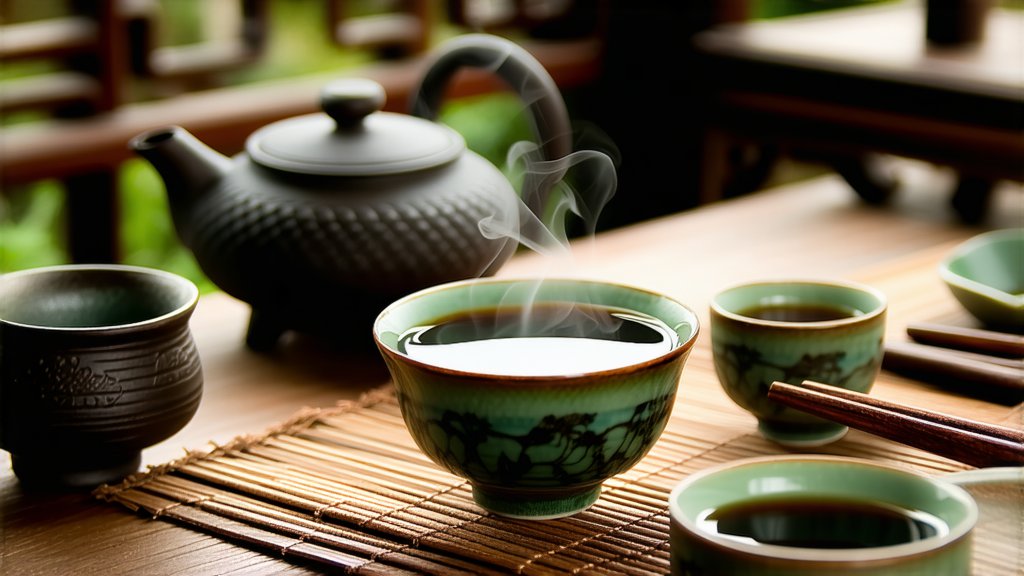
Pu-erh tea, a distinctive variety of dark tea originating from the Yunnan province in China, holds a revered place in the annals of global tea culture. This unique tea, renowned for its deep, earthy flavors and myriad health benefits, has captivated tea enthusiasts worldwide. In this comprehensive exploration, we delve into the storied history, diverse varieties, intricate production processes, and sophisticated tasting techniques that define Pu-erh tea.
Historical Roots and Evolution
The origins of Pu-erh tea can be traced back to the ancient caravan routes known as the Tea Horse Road, which connected Yunnan with Tibet and other regions. Legend has it that this tea was named after the market town of Pu'er, where tea merchants would congregate to trade their goods. Over centuries, Pu-erh tea evolved from a simple commodity to a cultural icon, deeply intertwined with the social and economic fabric of the regions it traversed.
Varieties and Classifications
Pu-erh tea is broadly categorized into two main types: raw (Sheng) and ripe (Shou). Each type boasts distinct characteristics and aging potentials.
-
Raw Pu-erh (Sheng): Made from sun-dried green tea leaves, Sheng Pu-erh undergoes natural fermentation over time, often within bamboo baskets or earthenware jars. This process allows the tea to develop complex flavors and aromas, with a profile that evolves with each passing year.
-
Ripe Pu-erh (Shou): Shou Pu-erh is produced through a controlled fermentation process known as "wet piling," wherein the tea leaves are piled together in a humid environment to accelerate microbial activity. This method results in a mellower, earthier flavor profile that can be enjoyed shortly after production without extensive aging.
The Art of Pu-erh Tea Production
The craftsmanship behind Pu-erh tea is both an art and a science. Here’s a glimpse into the meticulous steps involved:
-
Leaf Selection: High-quality leaves are handpicked, typically from ancient tea trees or wild-growing shrubs in Yunnan. These leaves are chosen for their robustness and rich flavor profile.
-
Withering: Freshly harvested leaves are spread out to wilt under natural sunlight, reducing moisture content and preparing them for further processing.
-
Fixation: The leaves are briefly heated to arrest oxidation, preserving their green color and freshness.
-
Rolling: The fixed leaves are rolled into tight spirals, enhancing their shape and aiding in the fermentation process.
-
Fermentation: Depending on whether it is Sheng or Shou, the leaves undergo either natural aging or controlled fermentation. For Sheng Pu-erh, this involves long-term storage in optimal conditions, allowing microbial action to gradually transform the tea. Shou Pu-erh, however, is subjected to a more immediate fermentation process through wet piling.
-
Drying and Packaging: After fermentation, the tea is dried and pressed into various shapes such as cakes, bricks, or bowls, which not only facilitate storage but also add to the aesthetic appeal.
The Ritual of Tasting Pu-erh Tea
Tasting Pu-erh tea is an experience steeped in tradition and mindfulness. Here’s how one might approach this ritual:
-
Preparation: Begin by warming the teapot and cups with hot water to enhance the tea’s aroma. Use about 5 grams of tea per 150 ml of water.
-
Brewing: Rinse the tea leaves briefly with boiling water to "wake" them up, then discard this initial infusion. For subsequent brews, pour hot water (around 95°C) over the leaves and let it steep for 10-30 seconds, depending on personal preference and the age of the tea.
-
Aroma: Inhale deeply before taking your first sip to appreciate the nuanced fragrances of the tea. Younger Sheng Pu-erh may exhibit floral or fruity notes, while aged Sheng or Shou will reveal deeper, earthier scents.
-
Taste: Savor the tea slowly, paying attention to its evolving flavors—from initial bitterness to mid-palate sweetness and a lingering aftertaste. Notice how different infusions bring out varying aspects of the tea’s character.
-
Texture: Feel the texture of the tea in your mouth, noting its smoothness or astringency, which can provide clues about its aging process and quality.
Health Benefits and Cultural Significance
Beyond its sensory pleasures, Pu-erh tea is celebrated for its numerous health benefits. Rich in antioxidants, polyphenols, it is believed to aid digestion, promote weight loss, and support cardiovascular health. Additionally, Pu-erh’s probiotic properties can contribute to gut health.
In Chinese culture, Pu-erh tea is more than just a beverage; it is a symbol of hospitality and respect. It plays a central role in social gatherings, family reunions, and formal ceremonies. Offering a cup of fine Pu-erh is seen as a gesture of goodwill and friendship.
Conclusion
Pu-erh tea stands as a testament to the enduring legacy of Chinese tea culture, blending historical depth with artisanal mastery. Its complexity and versatility make it a fascinating subject for both novice and seasoned tea drinkers. Whether you are drawn to the raw vitality of Sheng Pu-erh or the matured elegance of Shou Pu-erh, exploring this enigmatic world promises a rewarding journey through taste, tradition, and time.